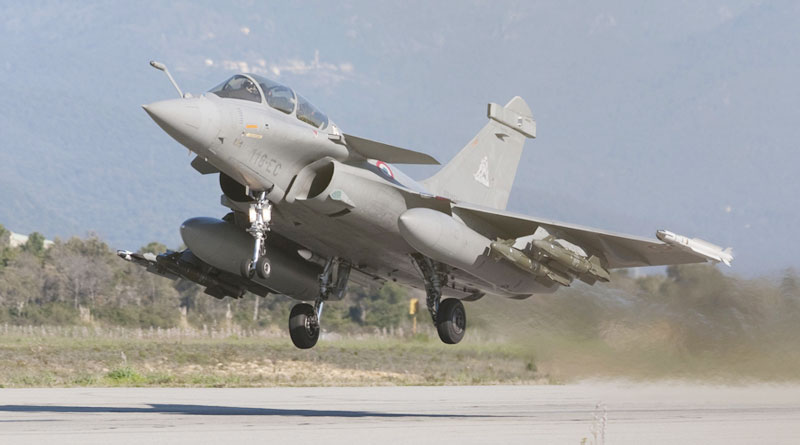As the second iteration of MMRCA 2.0 contest takes off, the IAF cannot afford a delayed acquisition process
Mihir Paul
In the wake of the controversial Rafale acquisition deal, coupled with dwindling fighter squadron strength, the Indian Air Force (IAF) is now eagerly looking to move forward with the second iteration of the Medium Multi-Role-Combat Aircraft (MMRCA 2.0) contest.

The IAF’s seemingly perpetual search for a modern multi-role fighter began in 2004 when India floated a Request for Information (RFI) for acquiring 126 MMRCA following which in 2007, six aerospace original equipment manufacturers (OEMs) fielded their fighters in response to the Request for Proposal (RFP) issued that year. The 2007 tender saw Boeing’s F/A-18 Super Hornet, Lockheed Martin’s F-16 Falcon, Swedish Saab’s Gripen, Russian MiG-35, European Eurofighter Typhoon and Dassault’s Rafale. The first MMRCA competition underwent rigorous technical trials and commercial negotiations when in 2012, Dassault’s Rafale was declared the winner. Following a series of bureaucratic setbacks and Dassault’s negotiations with offset partner Hindustan Aeronautics Limited (HAL) falling through, the ministry of defence (MoD), in 2017, signed a government to government deal to acquire 36 Rafales as an ‘emergency purchase’ in order to up the depleting squadron strength.
The MoD, in April 2018, released a fresh RFI for the procurement of 110 MMRCAs (MMRCA 2.0) in response to which seven OEMs expressed their interest. According to the RFI released in July, ‘The Ministry of Defence, Government of India, intends to procure Fighter Aircraft for the Indian Air Force (IAF) which is to be made in India. The proposal is to procure approximately 110 fighter aircraft (about 75 per cent single seat and rest-twin seat aircraft). The procurement should have a maximum of 15 per cent aircraft in flyaway state and the remaining 85 per cent aircraft will have to be made in India by a Strategic Partner/ Indian Production Agency (SP/ IPA)’.
The seven companies that have fielded their fighters for the second iteration of MMRCA are — Dassault Rafale, Eurofighter Typhoon, Lockheed Martin F-16, Boeing F/A-18E, Saab Gripen-E, and Russian Mig-35 and Su-35. This time around, however, the IAF will only test new systems on the aircraft which were either not available or tested during MMRCA 1.0. The RFP for this tender is still pending and is expected to be sent to the vendors by mid-2019.
Dassault Rafale
The French twin-engine delta-wing multi-role fighter manufactured by Dassault is still a worthy contender this time around. Given the fact that Rafale came out a winner after the gruelling selection process of MMRCA 1.0, Rafale is still a viable choice for the IAF. Being a twin-engine fighter with sophisticated AESA radar, powerful EW (Electronic Warfare) suite, as well as a BVR (Beyond Visual Range) capability (equipping MBDA’s Meteor BVRAAM possibly) including Nuclear Trigger option, Rafale has a good chance of winning this tender. Moreover, being 100 per cent French also provided Dassault a distinct edge over its competitors on the issue of technology transfer.
Dassault claims that Rafale has an advantage over many of the competitors because it is not subject to ITAR restrictions. Rafale also makes extensive use of radar-absorbent material (RAM) in the form of paints and other materials. RAM forms a saw-toothed pattern on the wing and canard trailing edges, for instance. The aircraft is designed so that its untreated radar signature is concentrated in a few strong spikes which are then suppressed by the selective use of RAM. The Rafale is equipped with an RBE2 passive electronically scanned radar developed by Thales, which has look-down and shoot-down capabilities and it can track up to eight targets simultaneously and provides threat identifications and prioritisation. Active electronic scanning makes it possible to switch radar modes quickly, thereby enabling operational functions to run simultaneously. In short, Rafale can carry a wide range of weapons, and perform air to air, air to ground, and air to sea combat well.
You must be logged in to view this content.

